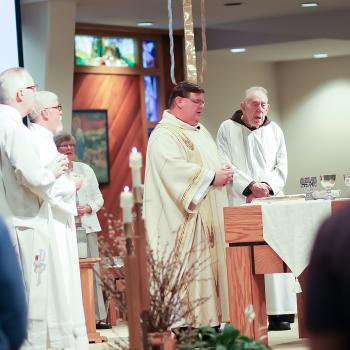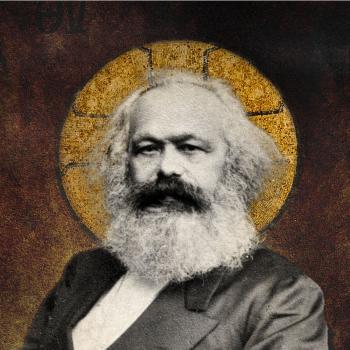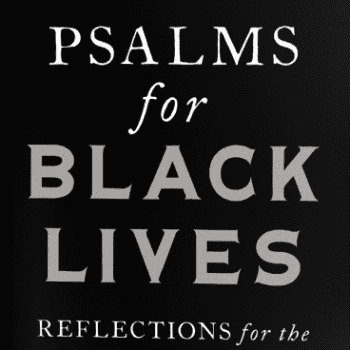Lectionary Reflection for August 22, 2010
Luke 13:10-17
Don’t we preachers experience a frisson, a sermonic sizzle, when we discover that a glimmering, golden thread ties several lectionary texts together?! I know I do. I read all the lectionary texts from Luke starting with August 22 and going through October 31. I discovered a glimmering, golden, preachable thread of continuity that runs through them. In each text there is at least one character, sometimes more than one, who is confronted with a situation that demands that they change their attitude and/or their circumstances. A crippled woman is healed at an inappropriate time (13:10-17). A wedding guest sits too close to the guest of honor and has to move (14:7-17). A man stares at the foundation of the tower he’s building and realizes he doesn’t have enough money to finish it (14:25-33). A desperate, crafty manager is confronted with praise for his financial creativity and has to change his attitude about his job and his boss (Luke 16:1-13). A short, social outcast up in a tree is asked to host Jesus for a meal and has to change his attitude about himself (Luke 19:1-10). A rich man is forced to change his attitude about the way he lived his life now that it’s too late (Luke 16:19-31). The dishonest steward and the publican are confronted with unexpected grace and have to figure out where to go from here (16:1-13 Dishonest Steward; 18;9-14 Pharisee and Publican). A Pharisee (18:9-14) and a presumptuous group of servants (17:5-10) are confronted with unexpected criticism and have to figure out where to go from here. A judge, confronted with a widow’s unprecedented persistence, has to make a decision (18:1-8). A healed leper is confronted with the ingratitude of his peers at the feet of Jesus (17:11-19). A shepherd is confronted with his unwillingness to let a single sheep be lost, and a woman with her frantic need to find that coin (15:1-10).
So my lectionary reflections for the next 11 weeks will focus on a different character (sometimes more than one) in either a parable Jesus tells or a scene from his ministry. It will examine the situation in which that character finds themselves and the change it demands of them. I predict we’ll find some connections with our own and our people’s lives.
This week is the story of Jesus healing a crippled woman.
Before this story in the 13th chapter of Luke comes the story of the barren fig tree (13:6-9). The gardener has a year to work the soil around it so that it can bear fruit. Our story of the crippled woman is followed by two analogies for the kingdom of God: the mustard seed growing into a great bush in which many birds will roost and the woman with the leaven (13:13:18-21). So this story has something to do with an opportunity to be healed so that we can be a channel for the kingdom of God at work in this world.
In 13:11 it says that she “appeared.” That sounds sudden. How does a bent over, hobbling woman appear? I spent a week in a hostel run by an order of elderly nuns a few years ago. Many of them had osteoporosis. I remember praying for one of them as she made her painstaking way down a long hall. She was bent over at the waist, and had to crane her neck at an uncomfortable angle to look at anything other than the floor. How did this woman, this bent over woman in our text, appear “just then”?
We are given 3 pieces of information about her infirmity, as if Luke is formatting his description three times. He is bolding it, underlining it, and then putting it in Alaska Extra bold font. We are told, in the first place, that she has been “crippled for 18 years,” a numerical detail that conveys the seriousness and length of her suffering. We are told, in the second place that she was “bent over” and, thirdly, we are informed that she was “quite unable to stand up straight.“ So in response to this decided infirmity, this thrice-detailed affliction, we are now told that “When Jesus saw her, he called her over” (13:12). Wouldn’t you think he would go to her? What if the text said, “She had been in excellent physical condition for a long time; she was quite fit; in fact she was able to jog for miles easily. When Jesus saw her, he got up and went to her.” That would be weird, only in the opposite way. So I’m not sure why he made her come to him, but then comes a three part healing.
First he proclaims her freedom from her ailment which he later labels as Satan binding her for 18 years. (13:16)
Second he lays hands upon her.
Third, and simultaneously, she stands up straight and begins praising God.
The phrase “stand up straight” shows up twice. First we are told that is what she is utterly unable to do. (verse 11) Then, we are told (in verse 13) that it is what she is “immediately” able to do when Jesus lays hands on her. The exact thing that she cannot do and yearns to do is precisely the thing Jesus empowers her to do. And therein lies the theme for a sermon. I think I’ll bold it, underline it, and Alaska Extra Bold it. The exact thing that she cannot do and yearns to do is precisely the thing Jesus empowers her to do.
Two qualifiers about this theme. 1. We need to keep in mind in preaching that physical cure and spiritual healing are not the same. Otherwise we unintentionally make people with chronic physical and mental health issues feel guilty. 2. The theme doesn’t apply to selfish desires or to unrealistic ones. For example, it’s not saying that, at my mature age, the very yoga pose I haven’t been able to do and really wish I could I’ll suddenly be able to do. I’m never going to be able to touch the tip of my nose to my big toe while putting my head back and bending my knee upward behind e so that the sole of my foot presses up over my head.
Having said that, this theme drawn from this biblical text is some people’s testimony. It’s mine in some respects and I’m betting it’s yours. It is the testimony of those in and beyond our congregations who have experienced the transforming power of Christ in their lives. Maybe they need our sermon to help them name it. Let’s ask them to think of an example of a time when the particular thing which was most important and difficult for them to do became, through Christ’s healing presence, that which they are were especially able to do.
Before I could not forgive….Now….
Before, I would never have conceived of myself as a leader…Now
Before, I would never have dreamed of standing up and speaking in front of a large crowd….Now
There are those in our midst who can say with the apostle Paul, “when I am weak, then I am strong.” (2 Corinthians 12:10). Our sermon can affirm their experience, help them name it, and inspire them to share that witness with others.
There are others who need to hear that message, who need the inspiring testimony of their brothers and sisters in the community who have experienced the healing Christ brings to situations, to relationships, to communities. There are those who need us to be the healing presence of Christ in situations of sorrow and poverty and desperation.
Maybe we are, at the same time, people who can affirm this testimony and people who need others to share it with us.
It’s time to make our painstaking way to Jesus, carrying with us the infirmities of spirit we’ve been dragging around for years. So we can hear him say “That which you have been unable to do (and need and yearn to do) is precisely that which, by my healing power in your life and relationships, you will now be especially equipped to do.” Thanks be to God!
Alyce M. McKenzie is Professor of Homiletics at Perkins School of Theology.












